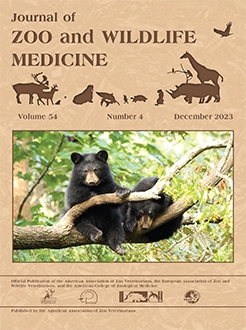Snakes are common household pets and frequently managed in zoos. Geriatric snakes commonly develop osteoarthritis, leading to a declining quality of life that often results in euthanasia. Anecdotally, the application of transdermal fentanyl patches (TFP) appears to contribute to clinical improvement, including increased activity level, in osteoarthritic snakes presumed to be in pain. This study evaluated serum fentanyl concentrations over time and the effects of TFP on the normal behavior of healthy, captive, adult corn snakes (Pantherophis guttatus) using constant video monitoring. Serum fentanyl concentrations were evaluated over 4 wk during 12.5 µg/h TFP application, and the results demonstrated long-lasting (>4 wk) serum concentrations that were consistent with analgesic efficacy in mammalian species during TFP application. At 4 wk of TFP application, mean serum fentanyl concentrations were 11.5 ± 5.5 ng/ml. Snakes were videotaped for 1 wk prior to and 2 wk after 12.5 µg/h TFP application, and behavior was evaluated by an ethogram. Behavioral changes associated with TFP application included decreased mean time spent active, decreased mean number of climbs, and decreased mean number of water visits; feeding behavior was unchanged. Overall, these results suggest that TFP application may provide safe, clinically effective analgesia in healthy corn snakes for at least 4 wk without inducing deleterious side effects, and may therefore be appropriate analgesia for management of osteoarthritic snakes.
How to translate text using browser tools
9 January 2024
SERUM FENTANYL CONCENTRATIONS AND BEHAVIOR ASSOCIATED WITH TRANSDERMAL FENTANYL APPLICATION ON HEALTHY CORN SNAKES (PANTHEROPHIS GUTTATUS)
Benjamin Walter,
Stephen Johnson,
Kurt Sladky,
Sherry Cox,
Mary Thurber
ACCESS THE FULL ARTICLE





